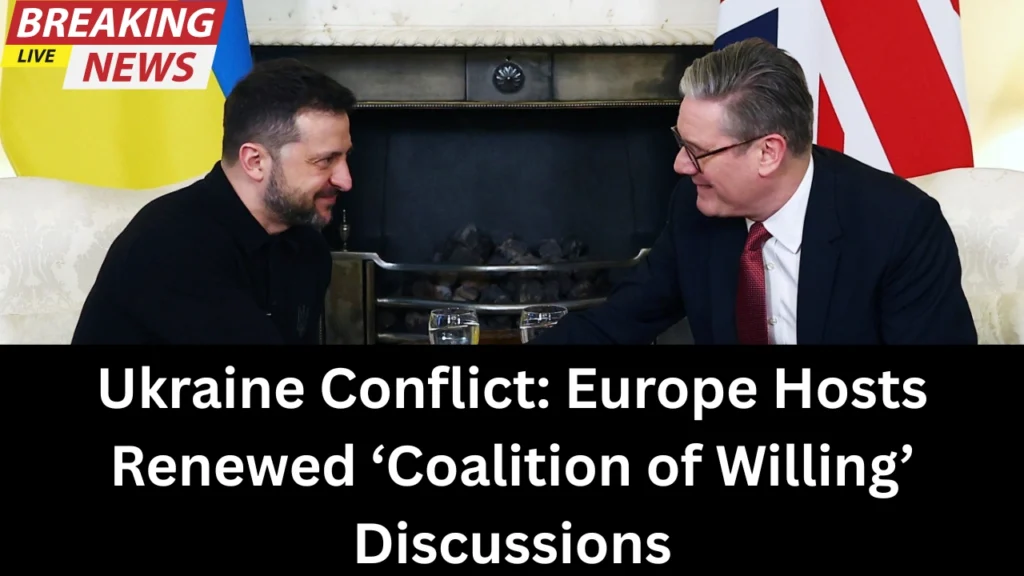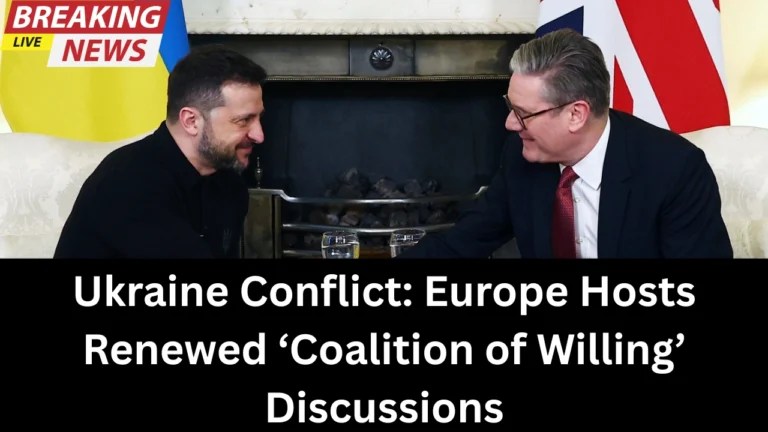As the war in Ukraine grinds on with no end in sight, European defence ministers gathered on Thursday at NATO headquarters in Brussels for fresh deliberations on the potential deployment of an international coalition force to secure a future ceasefire agreement. The meeting, involving representatives from over 30 countries, was spearheaded by Britain and France, who are rallying support for a “coalition of the willing” to stabilize Ukraine in the event of a peace deal.

However, despite the urgency and intensity of discussions, the talks revealed more questions than answers, particularly as U.S. peace efforts with Russia continue to stall and clarity on Washington’s military role remains elusive.
UK and France Lead Planning for Future Peace Support Force
British Defence Minister John Healey described the coalition’s contingency plans as “real and substantial,” underscoring the seriousness with which London and Paris are approaching the possibility of securing a lasting peace in Ukraine.
“Our reassurance force for Ukraine would be a committed and credible security arrangement to ensure that any negotiated peace does bring what President Trump has pledged — a lasting peace for Ukraine,” Healey said.
However, he clarified that the plan does not involve a traditional peacekeeping force positioned between warring sides, as might have been seen in previous conflicts. Instead, the proposed deployment would aim to reinforce Ukrainian military capacity, secure key areas, and ensure that Russia does not exploit any ceasefire to regroup.
French Defence Minister Sebastian Lecornu echoed similar sentiments, emphasizing that the Ukrainian army must remain armed and ready.
“The first guarantee of security is obviously support for the Ukrainian army, which means refusing to demilitarise Ukraine, as Russia is demanding,” Lecornu said.
Both nations confirmed that military planners would escalate efforts to develop operational strategies that cover land, air, and maritime security under a post-conflict scenario.
A Coalition Still in Formation
While Britain and France are driving the initiative, only a handful of countries have thus far signaled a willingness to contribute troops. According to European officials, Britain, France, and the Baltic states have expressed preliminary support for participating in the security framework.
Dutch Defence Minister Ruben Brekelmans, however, voiced concerns over the lack of clarity regarding the mission’s mandate and objectives.
“What is the potential mission, what is going to be the goal? What is the mandate? What do we do in different scenarios, for example, if there would be any escalation regarding Russia?”
His comments highlight the broader uncertainty facing the coalition, particularly in the absence of a defined strategy from the United States, whose participation is considered essential by many European allies.
Missing Link: US Clarity and Commitment
While President Donald Trump’s administration continues to hold back-channel talks with both Ukrainian and Russian officials in hopes of brokering a ceasefire, no concrete progress has materialized. Initial attempts to negotiate a halt to attacks on energy infrastructure reportedly found some verbal agreement, but strikes have continued unabated, and no formal mechanisms have been put in place.
This leaves European partners in the difficult position of developing plans without knowing the parameters of the peace efforts underway or the extent to which the U.S. military might back the coalition.
“It’s very important to have the United States on board,” said Brekelmans. “But then it also needs to be clear what type of mission it is and what we ask from the United States.”
Sweden’s Defence Minister Pal Jonson echoed the concern, noting that more clarity is needed before any Swedish commitment can be made.
“It’s helpful if there’s a clarity of what that mission would entail, and whether we are engaged in peacekeeping, deterrence, or reassurance,” he said.
Russian Opposition to NATO Presence
Another major roadblock is Moscow’s staunch opposition to any NATO troops being deployed on Ukrainian soil as part of a peace settlement. The Russian government has made it clear that it will not accept NATO’s direct military presence near its borders under the guise of peacekeeping or stabilization efforts.
This places the coalition in a tight spot: deploying troops without NATO’s involvement could dilute military credibility, but involving NATO runs the risk of provoking Russia and undermining any diplomatic breakthroughs.
So far, there’s been no indication from Russia that it would entertain the idea of a multinational deployment, even one composed of non-NATO forces or operating under a UN or EU mandate.
Obstacles Ahead: Mandate, Mission, and Messaging
As the coalition continues to take shape, several key questions remain unanswered:
- What will be the legal mandate of the coalition force?
- Under whose command will the deployment operate — NATO, the EU, or an ad-hoc multilateral command?
- What are the rules of engagement in case of renewed aggression or ceasefire violations?
- Will the deployment act as a deterrent, or will it remain passive unless attacked?
These strategic uncertainties have made many potential contributors hesitant, even as the humanitarian and security crisis in Ukraine deepens. The lack of transparency from the U.S. and Russia’s intransigence have further complicated planning.
Path Forward: Strategic Patience and Unity
Despite these hurdles, officials from the UK and France remain optimistic about the coalition’s development. Military planners are expected to meet again in the coming weeks to finalize deployment scenarios, address command structures, and explore the possibility of air and naval support missions that don’t directly involve boots on the ground.
Some analysts believe the coalition may begin with a limited logistical or reconstruction force, offering non-combat support in safer regions of Ukraine while peace talks are underway or after a formal ceasefire.
Others argue that any force, even symbolic, could help deter Russian violations and assure Ukraine’s sovereignty, as long as it operates within clearly defined limits and maintains international backing.
Conclusion: Coalition of Uncertainty
The latest round of talks in Brussels confirms that Europe is preparing for peace—but not yet ready for it. The idea of a “coalition of the willing” to help secure Ukraine’s future remains compelling but incomplete, hindered by ambiguous goals, unclear U.S. policy, and a deep distrust of Russia’s intentions.
As diplomatic efforts falter and military planning accelerates, the international community stands at a crossroads: prepare for peace, hope for diplomacy, but brace for conflict. Until clarity emerges—particularly from Washington—the coalition remains more an aspiration than an actionable plan.

